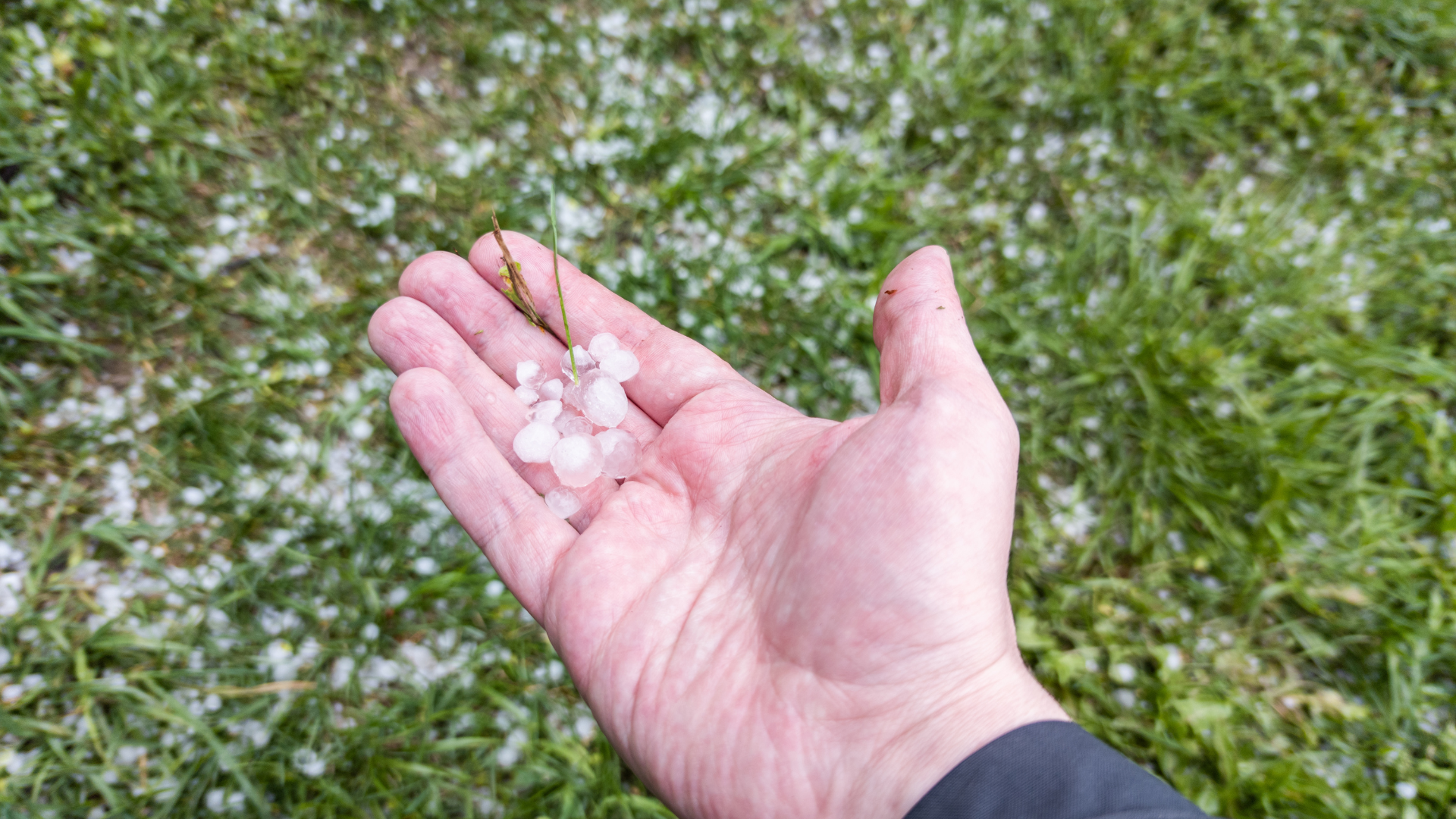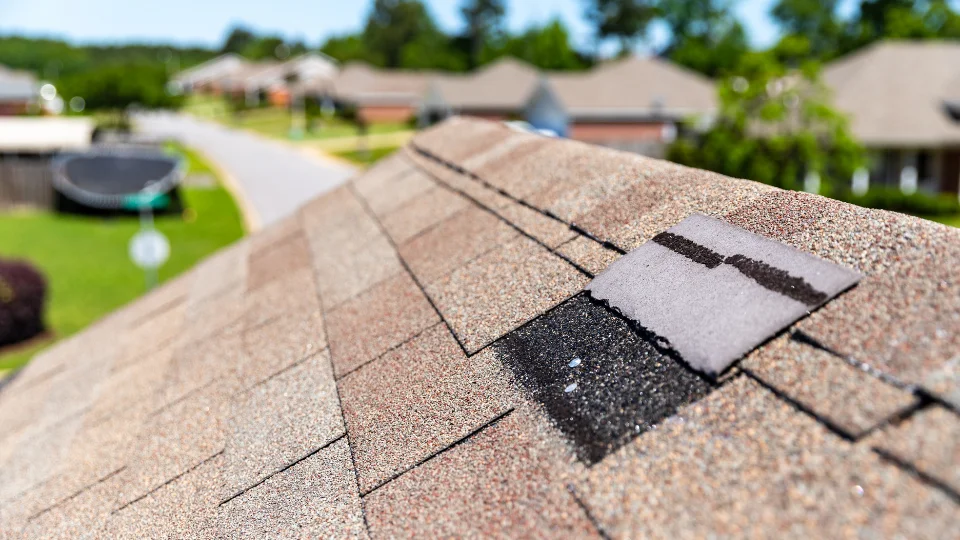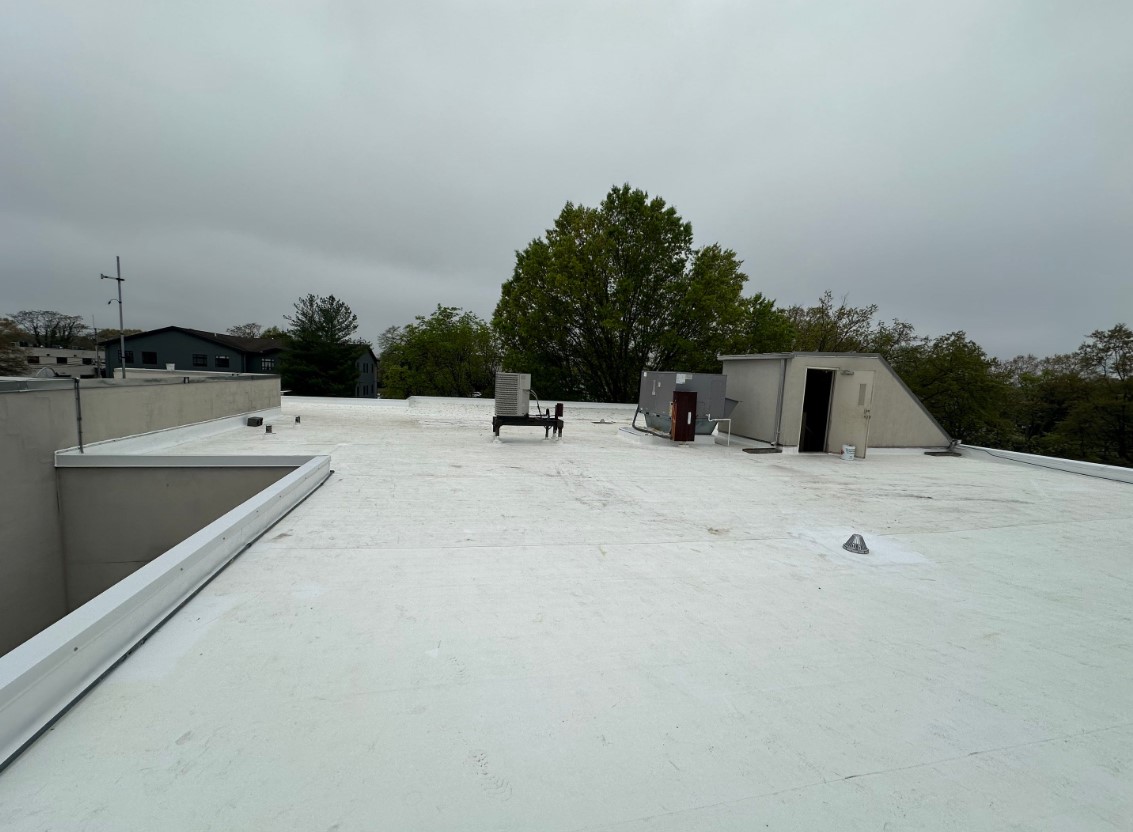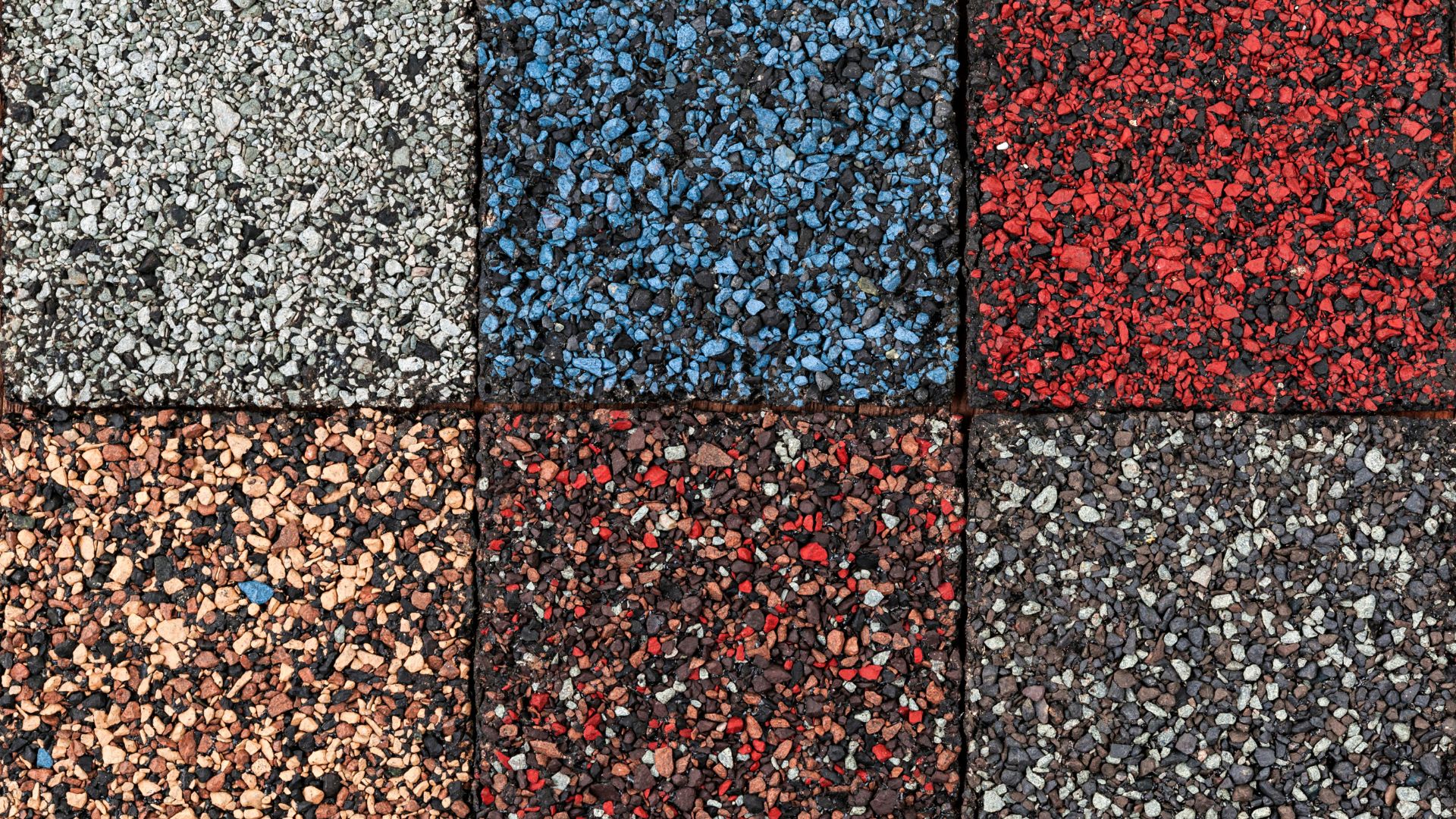Hail storms can surprise you. Sometimes they leave no mark, but other times, they damage your property. Homeowners often ask what size hail will damage a roof? This question is crucial because knowing the answer can help protect one of your biggest investments: your home.
The National Weather Service reports that large hail causes $1 billion in property and crop damage every year. Knowing the size of hail that can damage your roof helps you take timely action to protect your home and avoid costly repairs
Understanding Hail Impact on Roofs
Hail can seriously damage roofs, affecting their ability to protect your home. Different hail sizes cause various types of harm, making it vital for homeowners and property managers to understand these impacts.
Common Types of Hail Damage
Hail can hurt your roof in many ways. Even small hail, less than 1 inch, can cause big problems. One main issue is granule loss. Granule loss happens when hail knocks the protective granules off shingles, which can accelerate roof wear and tear.
Without these granules, the asphalt coating on your roof gets old faster. Always check your gutters and downspouts after a storm for these granules.
Another problem is cracks in the shingles. Hard hits from hail or strong winds can crack them, leaving bare spots on your roof. Sometimes, the impacts are so bad they tear off the shingle’s surfacing, showing the fiberglass mat underneath.
If this mat gets fractured, it makes more tears and cracks likely to happen over time. Also important to know is that hail and winds can weaken the self-seal strip of shingles which might lead to them blowing off during another storm.
Threshold Sizes of Hail for Damage
Understanding the impact of hail sizes on roof damage is crucial for homeowners and property managers. The severity of roof damage often depends on the size of the hailstones, as shown in the following reference table:
Severity Level:
- Non-Severe
- Marble-size (~1/2 inch)
- Dime, Nickel, Penny (~3/4 inch)
- Severe
- Quarter (~1 inch)
- Walnut (~1 ½ inch)
- Significantly Severe
- Hen Egg (~2 inch)
- Tennis Ball (~2 ½ inch)
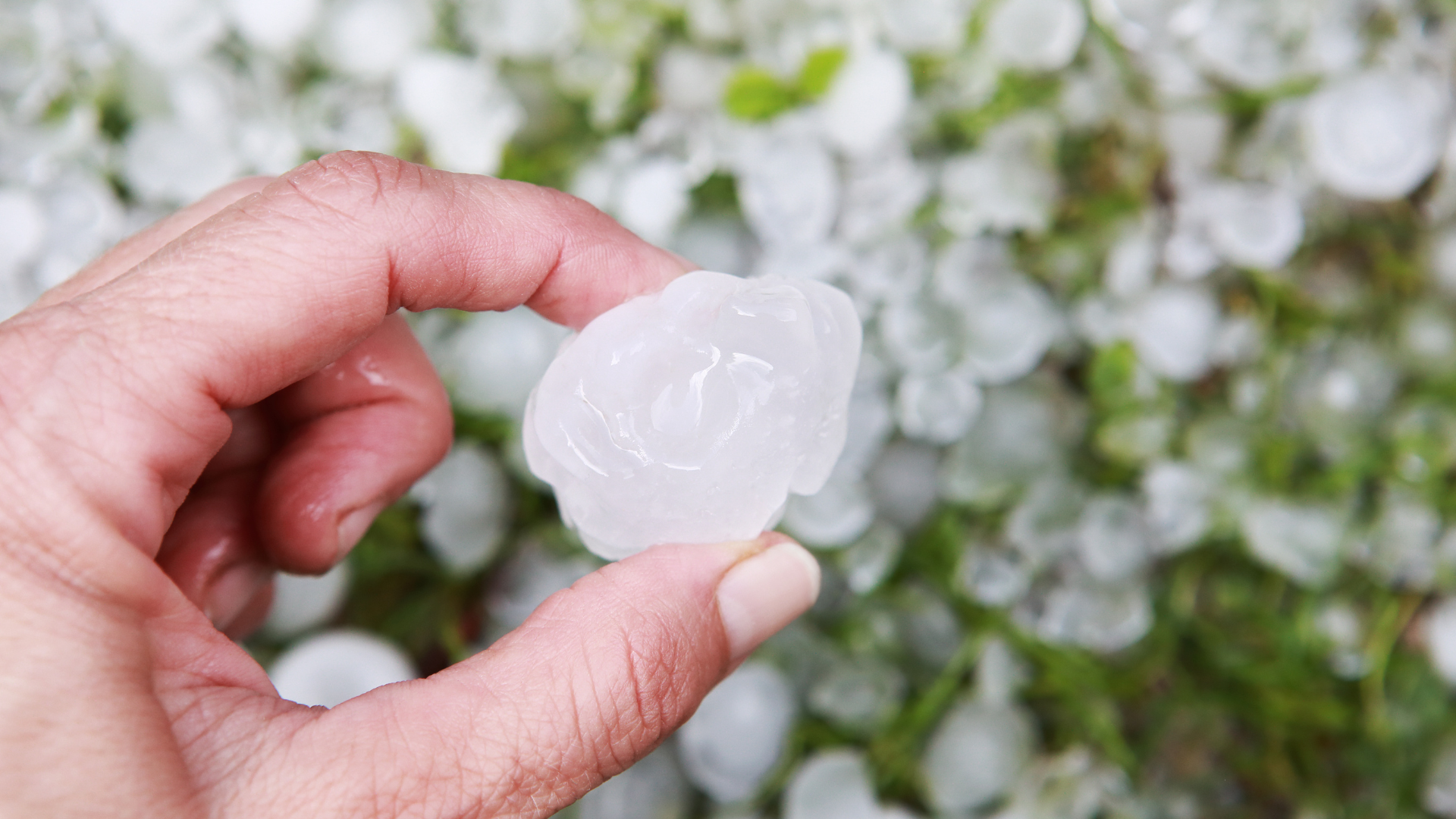
What Size Hail Will Damage a Roof?
Roof damage from hail typically begins when hailstones reach a diameter of 1 inch, about the size of a quarter. According to studies and industry experts, hailstones of this size can cause significant damage to common roofing materials such as asphalt shingles, leading to granule loss, cracks, and punctures. However, the extent of damage depends on various factors, including the roof’s age, material, and the wind speed during the hailstorm.
For example, hailstones as small as 3/4 inch (roughly the size of a dime) may damage older roofs or those made from less durable materials. In contrast, hailstones that are 2 inches or larger, can cause significantly severe damage to almost any roof, including puncturing through shingles and even damaging the underlying structure.
This information underscores the importance of inspecting your roof after a hailstorm, regardless of the size of the hail, as even smaller hail can lead to significant damage over time.
Identifying Hail Damage from the Ground
Spotting hail damage from the ground requires a keen eye. Look for dents and marks on your roof or broken shingles, which signal it’s time for a closer inspection. While some damage can be seen from the ground, always prioritize safety and avoid climbing onto the roof without proper equipment and experience
Visible Signs of Hail Impact
Hail can inflict several noticeable signs of damage on a property. Here are the indicators to observe following a hail storm:
- Dents in Gutters and Downspouts: These can indicate where hailstones struck and hint at possible roof damage.
- Granules in Gutters: If you notice granules collecting in your gutters, it could be a sign that hail has damaged your shingles.
- Marks on Siding: Look for any dings or cracks in your siding, which can result from hail impact.
- Surface Damage on Decks: Hail can leave noticeable dents or scrapes on your deck’s surface.
- Broken or Cracked Windows: Severe hail can cause fractures or shatter windows, indicating the intensity of the storm.
- Bent Gutters: Dented or bent gutters may disrupt water drainage, signaling areas where hail hit hard.
Each point guides homeowners and property managers in assessing their building’s resilience post-storm.
When to Seek a Professional Inspection
While some damage can be seen from the ground, always prioritize safety and avoid climbing onto the roof without proper equipment and experience. It’s best to call in a professional for a thorough roof inspection.
Roofs can hide damage from smaller hail too. A pro knows what subtle damage looks like after a storm. Even if there are no visible holes, your roof might still need help. Make sure to schedule an inspection fast after big hail hits.
Mitigation and Repair Strategies
To temporarily protect your roof from hail damage in the meantime of contacting a professional, explore various short-term fixes and long-term solutions. These strategies can help keep your home safe during the next storm.
Short-term Fixes
After hail hits, your roof may need quick fixes to prevent more damage. Here are some steps to help right away.
- Check for any visual damages, as listed above.
- Cover broken windows or damaged areas with a tarp to keep water out.
- Clear any clogged gutters to avoid water backup under your shingles.
- Secure loose shingles temporarily until professionals can fix them.
- Take photos of any damage for future insurance claims or repair estimates.
While these strategies can provide temporary relief, always consult with a roofing professional for thorough repairs and long-term solutions.
Long-term Roof Protection Solutions
Talk to a professional about these long-term protection strategies that can save you money and stress:
- Install impact-resistant shingles. These are designed to withstand larger hailstones, reducing the risk of damage.
- Apply a roof coating that’s hail-resistant. This adds an extra layer of protection, helping to deflect hailstones.
- Regular maintenance checks ensure minor issues don’t turn into big problems after a storm.
- Upgrade your attic insulation and ventilation. This helps reduce the chance of ice dams, which can weaken roofs and make them more susceptible to hail.
- Trim trees near your home regularly. Falling branches during a storm can damage shingles and make the roof more vulnerable to hail.
- Consider metal roofing if you’re in a high-risk area for hail. Metal roofs are much more resistant to hail than traditional shingles.
- Install gutter guards to prevent blockages from debris carried by the wind during storms, ensuring proper drainage away from the roof.
- Work with professionals for roof installation and repairs to guarantee that materials are properly used for maximum protection against hail damage.
Navigating Insurance Claims for Hail Damage
Filing a claim for hail damage starts with understanding your insurance policy and gathering evidence of the impact. Expect inspections and possible negotiations as your provider assesses the cost of repairs.
Steps to File a Claim
Hail damage can take a toll on your roof, leading to the need for repairs or replacement. Filing an insurance claim is the first step toward getting your property back in shape. Here’s how to do it:
- Check your insurance policy. Know what it covers and any deductibles.
- Document the damage. Take photos or videos of all hail impacts on your roof.
- Contact a trustworthy roofing contractor who deals with insurance claims. Get a free property evaluation.
- Report the hail damage to your insurance company as soon as possible.
- Fill out claim forms provided by your insurer. Be detailed about the extent of the damage.
- Schedule an appointment with the insurance adjuster. They will inspect your roof.
- Share the contractor’s report and your documentation with the adjuster during their visit.
- Follow up regularly on your claim status with the insurance company.
- Review the settlement offer from insurance to ensure it covers all damages.
- Approve repair or replacement work once you agree with the claim amount.
What to Expect from the Insurance Process

The insurance process for hail damage starts with filing a claim quickly. This step is crucial as insurers have deadlines. Coverage details vary by location, insurer, and policy specifics.
It’s important to know your policy well.
After you file a claim, the insurance company may send an inspector to assess the damage. If approved, they might cover repair costs. Approve repair or replacement work once you agree with the claim amount, and ensure you keep all documentation for future reference.
Choose Landmark Roofing
Landmark Roofing brings over 55 years of roofing expertise to Severna Park, MD, and beyond. Our team offers top-quality services not just for roofs but also for doors, gutters, siding, and windows.
Our work shows a strong commitment to the community and customer satisfaction. We do our jobs well without leaving a mess.
Our team is known for our skillful handling of every project we take on. Find out more about our services and choose us for your next project to see our quality work firsthand.
FAQs
1. What size hail will damage a roof?
It depends on the type of roof, as well as its age. Typically, hail 1 inch in diameter or bigger can cause severe harm to your roof.
2. How does determining the risk of hail help homeowners?
Determining the risk helps homeowners prepare for weather conditions that could harm their home’s structural integrity and possibly lead to an insurance claim.
3. Can any type of roof withstand all sizes of hail?
No, even strong roofs may sustain some form of damage from large enough or intense enough bouts with hail.
4. Should I file an insurance claim for every instance of hail?
Not necessarily; only significant damage affecting your home’s structure or safety should prompt a homeowner insurance claim.

